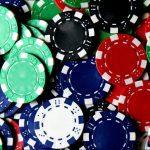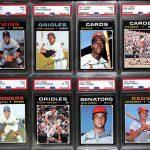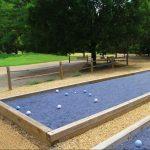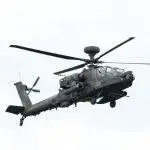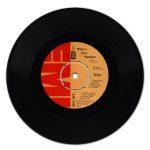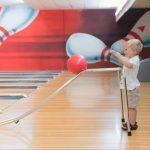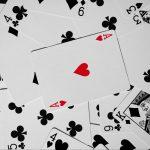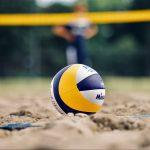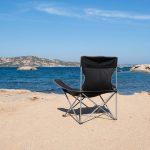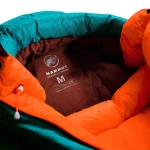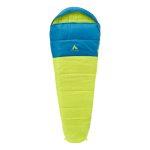Bowling Ball Size and Dimensions
Bowling is a sport in which pins are knocked over with a hard, spherical ball, and the primary weapon that is used in bowling is called a bowling ball. You can use a small ball of similar material having no indentations in certain bowling games such as duckpins and candlepins (skip straight to the Bowling Ball Size Charts).
Bowling balls with three finger holes and one thumb hole are standard for both ten-pin and American nine-pin games. Bowling games including five-pin, candle-pin, duck-pin, and European nine-pin use balls that are hollow and so small that they may fit in the palm of your hand. These balls are also used in duck-pin bowling. Polyester, urethane, and resin are the three main coverstock options for bowling balls (reactive urethane).
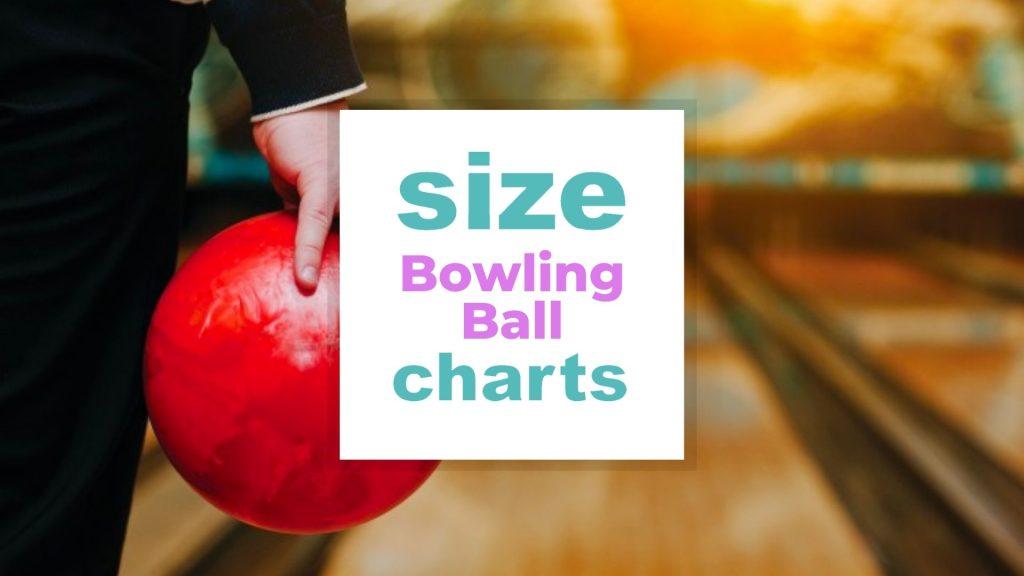
Polyester, the cheapest material, is unaffected by the oils on the lane and hence does not give as much hook. Urethane is midway between polyester and resin in terms of cost, and it has better hooking ability and requires less maintenance. Resin, the most expensive material, is also the most long-lasting and effective.
The core is made from a ceramic or plastic-like substance derived from a combination of barium or bismuth graphite with resin. Track Inc., a maker of bowling balls, claims that burned ceramic balls are more effective than those with graphite or plastic cores because they do not absorb energy. Iron oxide is used to improve the core’s center of gravity sometimes.
Comfort, control, and power all improve with a well-fitted ball. It reduces muscle fatigue and the risk of injury from strains, sprains, and deep calluses in the hands and arms. Following these guidelines will help you select the ideal bowling ball size.
Jump right into the Frequently Asked Questions
Related: Foosball Table Size: What Are The Dimensions?, Paintball Gun size – guns, gear and caliber size chart, Ball Size chart for exercising or for your office
Bowling Ball Size Table of Contents
- Bowling ball size chart- Dimensions
- Bowling ball sizes in different countries
- Kid’s bowling ball size chart
- How to choose the right Bowling ball size
- Choosing the right kid’s Bowling ball sizes
- Frequently Asked Questions
Bowling Ball Size Chart–Dimensions
Related: Shuffleboard Table Size and Dimensions, Basketball Size Guide
| Spans | X-Small | Small | Medium | Large | X-Large |
| Middle Finger | 2-1/2 in 6.35 cm | 2-13/16 in 7.14 cm | 2-15/16 in 7.46 cm | 3-7/16 in 8.73 cm | 3-1/2 in 8.89 cm |
| Ring Finger | 2-5/8 in 6.67 cm | 2-15/16 in 7.46 cm | 3-1/16 in 7.78 cm | 3-9/16 in 9.05 cm | 3-5/8 in 9.2 cm |
| Hole Sizes: | |||||
| Middle Finger | 5/8 in 1.59 cm | 3/4 in 2 cm | 13/16 in 2.06 cm | 7/8 in 2.2 cm | 15/16 in 2.38 cm |
| Ring Finger | 5/8 in 1.59 cm | 11/16 in 1.7 5 cm | 3/4 in 2 cm | 27/32 in 2.14 cm | 7/8 in 2.2 cm |
| Thumb | 23/32 in 1.83 cm | 13/16 in 2.06 cm | 27/32 in 2.14 cm | 1 in 2.54 cm | 1-1/64 in 2.58 cm |
Bowling ball sizes in different countries
Related: Golf Ball Size and dimensions: Is every ball the same size?
| Diameter | Weight | countries | |
| candlepin bowling balls | 4.5 in 11.43 cm | 2 lbs to 2lb 7oz 0.9 kg to 1.1 kg | MA, ME, NH, VT, Provinces of Nova Scotia, New Brunswick, Canada, Assorted Locations around the USA |
| duckpin bowling balls | 4.75 in, 4 7/8, or 5 in 12.07 cm, 12.38, or 12.7 cm | 2 lbs 11oz to 3 lbs 12oz 1.22 kg to 1.7 kg | CT, MA, MD, RI, Washington DC, VA, WV, and assorted locations around the USA. |
| RubberBand duckpin bowling balls | 4.75 in or 4 7/8 in 12.07 cm or 12.38 cm | 3 lbs 6oz to 3lbs 10oz 1.53 kg to 1.644 kg | Western & Northern PA (Pittsburgh and Erie areas), Montreal, Canada, Quebec Canada. |
| five pin bowling balls | 4.75 – 5 in 12.07 cm – 12.7 cm | 3 lbs 4 oz to 3lbs 12oz 1.47 kg to 1.7 kg | Canada |
| Mini lane | 4.5, 4.75, or 4 7/8 in 11.43 cm, 12.07 cm or 12.38 cm | 2 lbs to 3 lbs 10 oz 0.9 kg to 1.644 kg | USA |
Kid’s bowling ball size chart
Related: Sports Ball by Size
| Spans | X-Small | Small |
| Middle Finger | 2-1/2 in 6.35 cm | 2-13/16 in 7.14 cm |
| Ring Finger | 2-5/8 in 6.67 cm | 2-15/16 in 7.46 cm |
| Hole Sizes: | ||
| Middle Finger | 5/8 in 1.59 cm | 3/4 in 2 cm |
| Ring Finger | 5/8 in 1.59 cm | 11/16 in 1.7 5 cm |
| Thumb | 23/32 in 1.83 cm | 13/16 in 2.06 cm |
How to choose the right Bowling ball size
Related: Volleyball Size Chart
In the United States, as well as in many other countries, bowling is a highly regarded sport. As a sport, it appeals to people of all ages and both sexes. The nicest thing about bowling is that you can start playing right away, regardless of your skill level.
It’s simple to learn the fundamentals, but mastery causes familiarity with more advanced strategies. This article will serve as a guide to bowling ball sizes (also known as “Bowling Ball Dimensions”) and will explain how choosing the proper size will improve your game and increase your enjoyment of the sport.
Choosing the right kid’s Bowling ball sizes
Related: Ping-Pong Ball Size Chart
Bowling balls range in weight from six pounds to fifteen pounds, giving kids plenty of room to develop as they age and continue to enjoy the sport. If the youngster is six years old, the ball should weigh six pounds because it is the first rule of thumb.
If a youngster weighs 84 pounds, for example, they might use an eight-pound ball according to the other typical rule of thumb that calls for one pound for every 10 pounds of body weight.
But there are individual differences between every youngster. When the kid discovers what they can throw farthest, they can take it to the pro shop to have it measured. It is recommended, however, that they practice with a ball that is a pound or two heavier than the one they want to use.
Simply said, a bowling ball that has been drilled and sized to the user’s hand performs better in the hands of that bowler. In theory, a lighter ball would be more difficult to keep under control. High school boys typically throw a 14- or 15-pound ball, but their coaches can advise them on the best weights for their individual strengths and abilities.
The Perfect Weight
Different bowlers will have different preferences for the weight of a bowling ball. When selecting a ball, a decent rule of thumb is to choose one that is 10% of your body weight (up to 16 pounds); for example, someone who weighs 150 pounds should select an 8-pound ball.
However, some people may like to use a bowling ball that is lighter or heavier. If you have trouble picking up and swinging a bowling ball, it is too heavy for you to use regularly. Using a lighter ball could help you maintain your form better.
You should pick a ball that is heavy enough for your technique to avoid problems caused by using a too-light ball. Balls in the 14 to 16-pound range are popular amongst adult males, whereas balls in the 10 to 14-pound range are more popular amongst adult females. A bowling ball weighing between 6 and 14 pounds is ideal for a young player.
Use a lighter ball if throwing a ball that weighs 10% of your body weight would be too taxing while you’re healing from surgery or dealing with another physical issue. One must be at ease when practicing.
Learn more about bowling ball size and more (video)
Frequently asked questions
1. What size bowling ball should I use?
Bowling balls should weigh no more than 10% of your body weight, as a general rule of thumb. So, a woman who weighs 140 pounds would typically bowl with a 14-pound ball while a man who weighs 160 pounds would use a 16-pound ball. Although this is a solid guideline, it is not always in your best interest to pick a ball that satisfies this condition.
Here we’ll assume a 160-pound individual who has recently had a back ailment. Using a 16-pound bowling ball would be ridiculous. It would be risky to add insult to injury by causing further damage.
As a result, the best bowling ball weight should be determined by the bowler’s body type and skill level. The bowling ball you use should fit you as snugly as a well-tailored suit.
2. Are there different size bowling balls?
There are two standard sizes of bowling balls used in the sport: ten-pin and five-pin. Standard ten-pin bowling balls have a diameter of 8.5 in or 21.6 cm and three finger holes. However, five-pin balls are five inches in diameter and have no finger holes.
Many weights of bowling balls are also easily accessible. Weights of 10, 11, 12, 13, 14, 15, and 16 pounds are offered for adults (4.5 kg to 7.2 kg). Children’s versions are available in six, eight, ten, twelve, fourteen, fifteen, and sixteen-pound weights (2.7 kg to 7.2 kg).
Using the right weight requires thinking about your upper body and arm strength. Someone who isn’t used to carrying around 16-pound balls for long periods of time may tire of doing so.
3. Do pro bowlers use 14-pound balls?
Most bowlers use 15-pound balls, followed by 16-pounders and 14-pounders. Oddly enough, dropping to 15 pounds was seen as less desirable back when 16 pounds was the norm.
4. How heavy is a size 10 bowling ball?
Since most of you are probably more interested in the ten-pin balls, we’ll get into those first. All the sizes we’ve discussed are special to different bowling games, and most of them are subject to restrictions and criteria that are unique to those games.
Naturally, this is true for ten-pin bowling balls. Both the USBC and World Bowling enforce rules for the sport of ten-pin bowling.
A ten-pin ball must meet USBC standards, which call for it to have a diameter between 8.500 and 8.595 inches (21.59 and 21.83 cm) and a weight of fewer than 16 pounds.
Ten-pin balls can only vary in size by a small margin, and even then there are strict requirements for things like thumb hole size, surface hardness, and roughness, and performance qualities like the radius of gyration.
5. Is a 15-pound bowling ball too heavy?
Since most of you are probably more interested in the ten-pin balls, we’ll get into those first. All of the sizes we’ve discussed thus far are special to different bowling games, and as such, most of them are subject to restrictions and criteria that are unique to those games.
Naturally, this is true for ten-pin bowling balls. Both the USBC and World Bowling are responsible for enforcing rules for the sport of ten-pin bowling.
A ten-pin ball must meet USBC standards, which call for it to have a diameter between 8.500 and 8.595 inches (21.59 and 21.83 cm) and a weight of fewer than 16 pounds.
Ten-pin balls can only vary in size by a small margin, and even then there are strict requirements for things like thumb hole size, surface hardness, and roughness, and performance qualities like the radius of gyration.
6. Should I bowl with a heavier ball?
If you weigh 150 pounds, your bowling ball should be at least 8 pounds heavier than that (16 pounds is the maximum recommended weight). The ball should have some heft to it, but not so much that it causes discomfort.
Using a ball that is too light prevents it from swinging on its own weight. For their first games, adult male beginners typically chose balls weighing 14 to 16 pounds, while adult female beginners typically selected balls weighing 10 to 14 pounds. Bowlers of a younger age should use balls that weigh between 6 and 14 pounds.
If you have undergone arm surgery or if you have a medical condition that makes it difficult for you to carry a ball that weighs 10% of your body weight, then you might consider using a lighter ball. Bear in mind that having faith in your own throws is absolutely necessary for success.
7. The Lightest and Heaviest Bowling Ball
The USBC sets a maximum weight limit of 16 pounds for bowling balls (16 lbs). Some bowlers may choose this heavier ball for increased power and hooking ability, while others may need to go with a lighter or heavier option depending on their weight and strength.
Bowling balls for adults typically weigh between 10 and 16 pounds, with many female bowlers preferring the lower end of that spectrum.
Bowling alley “house balls” typically weigh around six pounds, making them the lightest available. If you cannot locate the items in question while browsing the shelves, please contact the front desk for help.
For younger players, a ball weighing between 6 and 8 pounds is more practical. Smaller children and those with less developed motor abilities can safely lift this amount of weight. We don’t think it’s appropriate to give a child a ball that weighs over 8 pounds.
Conclusion
By reading this guide, you now have the tools you need to pick the best bowling ball for your needs. We hope this article has been helpful to you, whether you were just looking for information about bowling ball sizes or if you were also wondering how to tell if your ball was the right weight.
So, if you want to get started, what are you waiting for? Buy a new bowling ball and get to work on your game. Please let me know if you have any further inquiries or issues by leaving a comment. We appreciate you taking the time to read this; it makes us thrilled when one of our posts helps people learn something new.
Kindly share with others and for questions leave them in the comment box.
Picture in this post is by Josh Applegate on Unsplash
Related to Bowling Ball Size
- O’Neill Wetsuit Size Charts
- Poker Chip Size Guide
- Baseball Card Size Guide
- Bocce Ball Court Size and Dimensions
- Pool Cue Length – Why it is Important?
- Helicopter Sizes and Different Types
- Chessboard Dimensions: What Is The Size Of It?
- Vinyl Record Size and Dimensions
- Ping-Pong Ball Size Chart
- Dolls Size: What Are the Different Sizes of Dolls?
- Bowling Ball Size and Dimensions
- What is the Size of a Playing Card?
- Basketball Size Guide
- Volleyball Size Chart
- Beer Pong Table Dimensions
- Tent Size Chart for Road, Wedding…
- Jet Ski Size: Which Size Should You Go For?
- Sailboat Size Guide for Beginners and PROs
- Rooftop Tent Size Chart
- Martial Arts Ring Sizes
- Portable Folding Chair Size for Camping, Sports…
- Mammut Sleeping Bag Sizes
- McKINLEY Sleeping Bags Sizes
- Musical Ensemble Size and Structure


